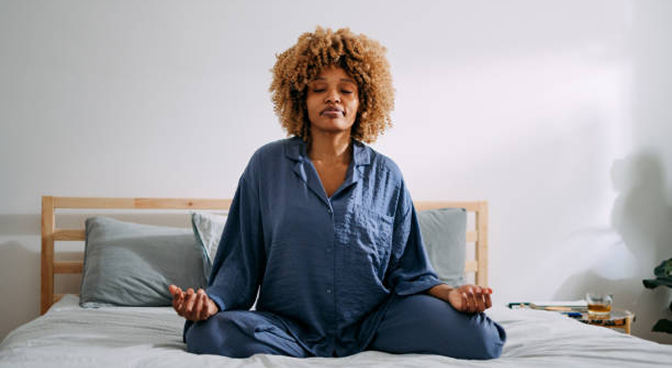Sleepwear often feels like an afterthought, something you throw on before turning off the lights. But what you wear to bed can quietly influence your mood, emotions, and even the quality of your sleep.
Psychologists have long observed how clothing affects behavior and mindset, and that doesn’t stop when the sun goes down. From fabric choice to color preference, your bedtime outfit says a lot about your emotional state and how you transition from day to night.
In this blog, we explore how sleepwear influences the mind and why your nighttime routine deserves more attention than you think.
Why What You Wear to Bed Quietly Shapes the Way You Sleep
Your choice of sleepwear isn’t just about comfort; it’s a subtle language your body and mind understand. This quiet connection between clothing and psychology plays a more important role in your nightly routine than most people realize.
Sleepwear as a Reflection of Mood and Identity
The sleepwear you choose often mirrors how you feel. On anxious nights, you might reach for your softest, most familiar set. On relaxed days, you may prefer lighter, more stylish options.
Without even realizing it, your clothing choices signal something deeper: your need for safety, ease, or a bit of control before bed. Your favorite sleepwear may not just be about comfort; it’s emotional armor for the night.
A Signal to Relax Your Brain
Sleepwear plays a quiet role in your relaxation process. Changing into pajamas is a simple yet effective signal to the brain that the day is ending and rest is beginning.
This small habit, part of what psychologists call a “transitional behavior,” helps shift your mind from active thinking to calm rest. When your sleepwear feels soft and familiar, your brain learns to associate it with comfort and safety, making it easier to relax and fall asleep.
Fabric and Fit Can Influence Emotional Safety
Texture matters more than we think. Cotton and bamboo fabrics create a feeling of ease and breathability, while silk or satin might evoke self-care and elegance.
The right material can change how you feel emotionally. Sleepwear that feels soothing provides psychological reassurance, a small but meaningful source of stability after a long day.
Confidence Begins With Comfort, Even at Night
Wearing thoughtfully chosen sleepwear, even when no one sees it, boosts your sense of self-worth. It’s a subtle way of telling yourself, “I deserve to feel good.”
This self-care also impacts relationships. When you feel at ease and confident in your sleepwear, you bring that same calm energy into your shared spaces and connections, especially in intimate partnerships.
Your Pajama Habits Reveal Your Inner Patterns
Whether you rotate through matching sets, stick to one favorite shirt, or prefer loose loungewear, your habits say something about you.
Minimalists often opt for soft, neutral basics. Those who enjoy variety may rotate styles and fabrics based on mood. Either way, there’s no wrong choice, but the patterns can offer insight into what comforts and grounds you.
Conclusion
What you wear to bed is more than just a routine; it’s a nightly reflection of how you care for yourself. From soft fabrics that calm your skin to colors that lift your mood, sleepwear shapes how you transition from stress to stillness.
So tonight, when you pull on your pajamas, take a moment. Do they bring you ease? Do they reflect how you want to feel?
Your sleepwear could be the softest form of self-understanding you’ve been overlooking.




